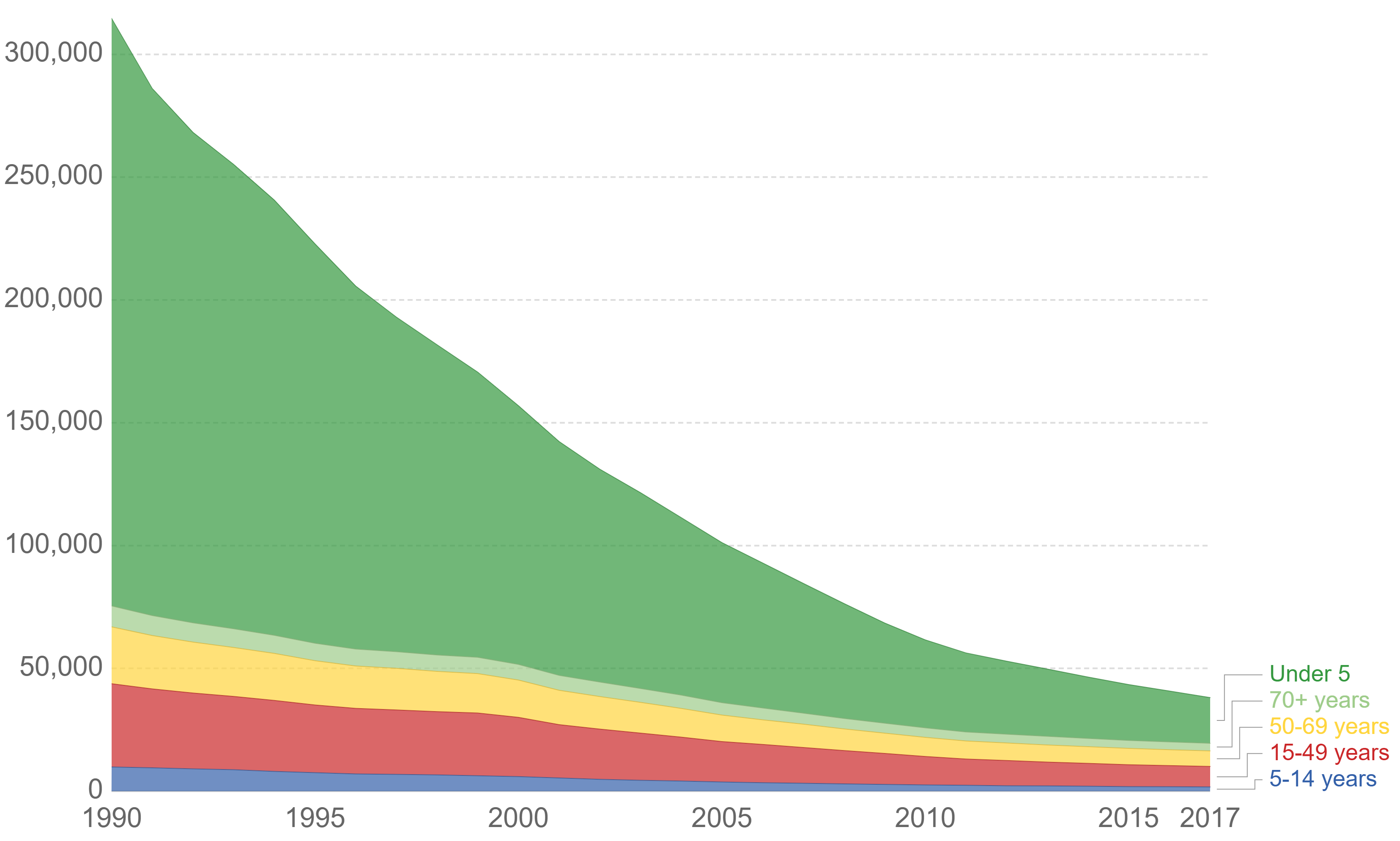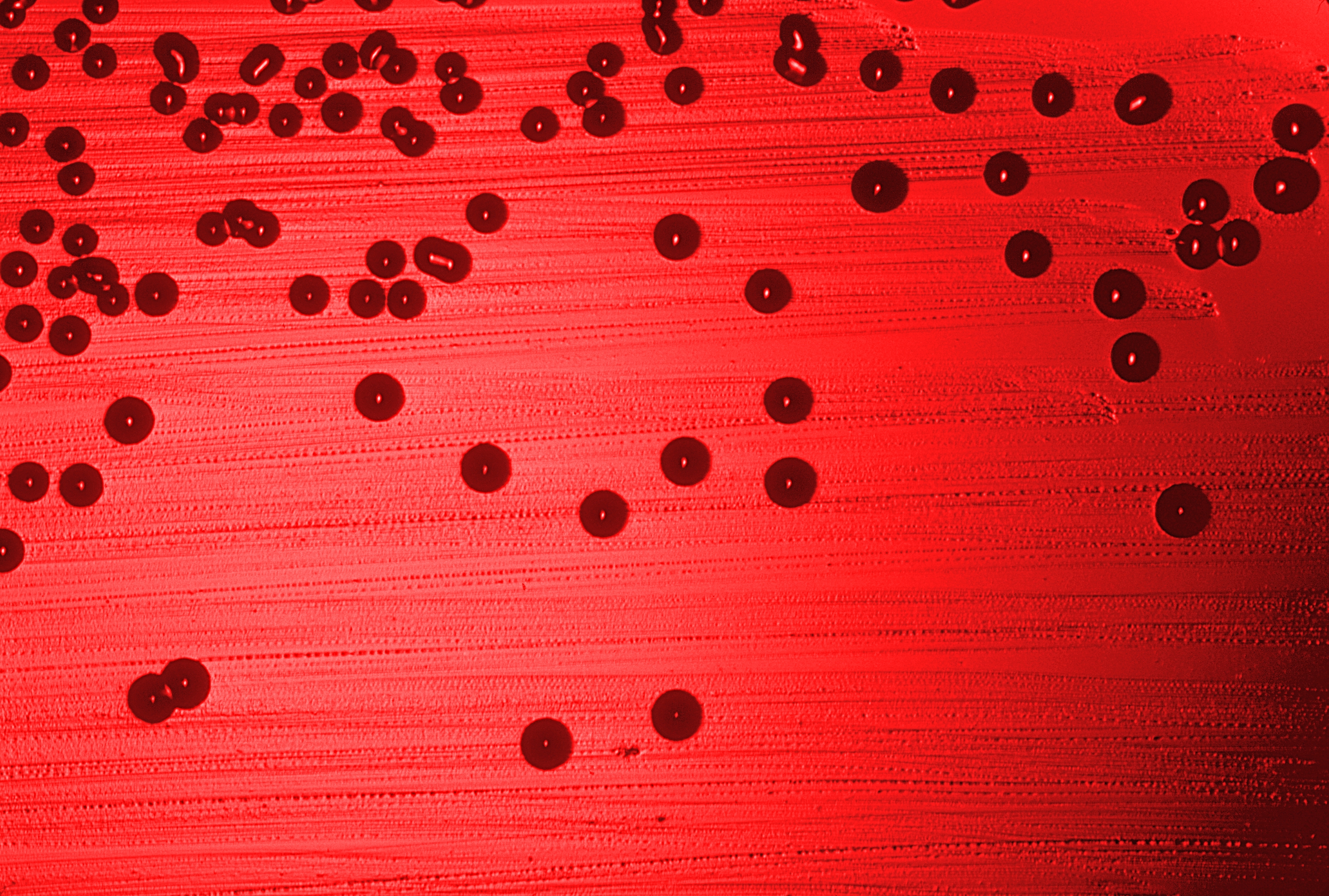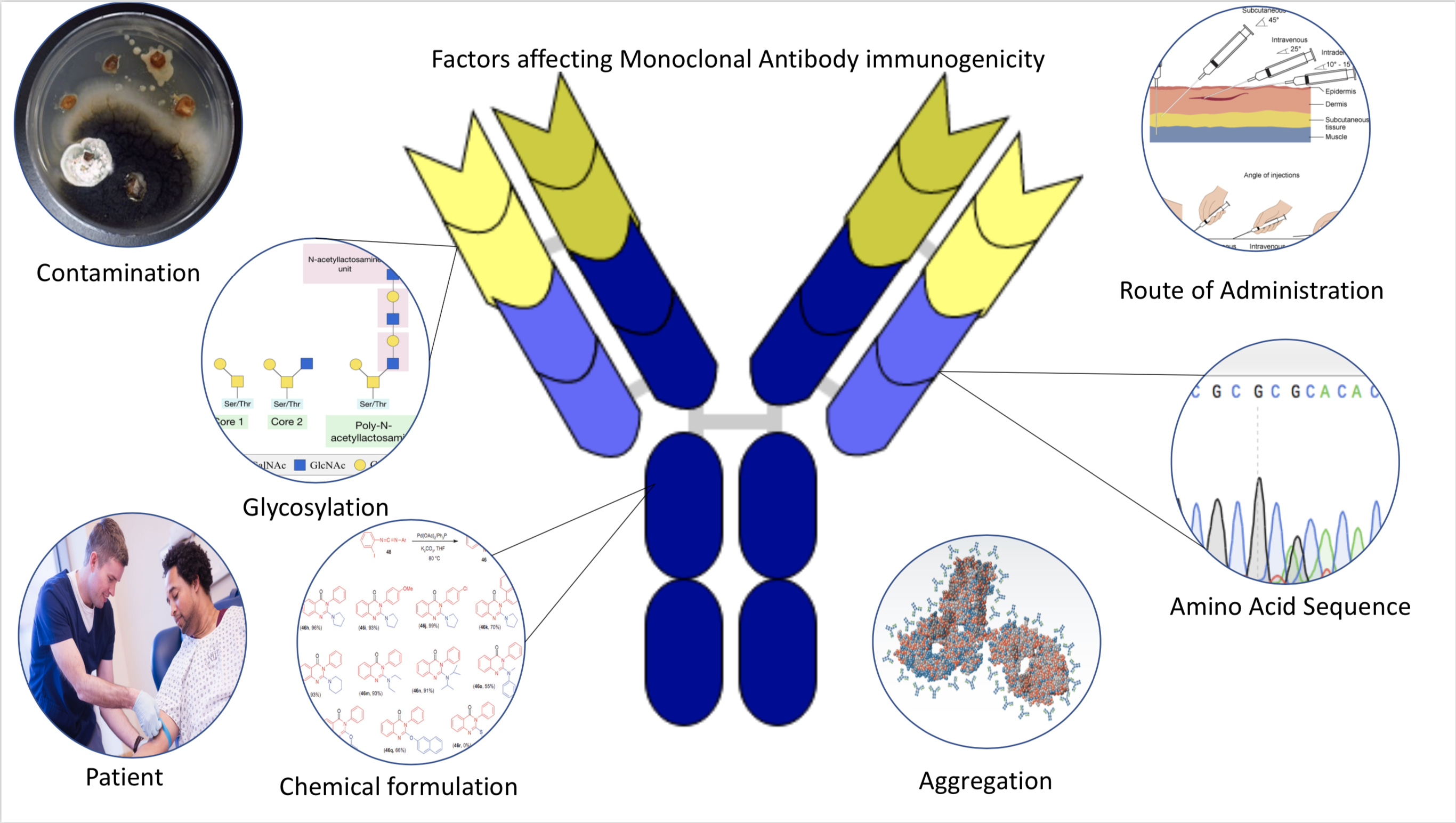|
Toxoid
A toxoid is an inactivated toxin (usually an exotoxin) whose toxicity has been suppressed either by chemical (formalin) or heat treatment, while other properties, typically immunogenicity, are maintained. Toxins are secreted by bacteria, whereas toxoids are altered form of toxins; toxoids are ''not'' secreted by bacteria. Thus, when used during vaccination, an immune response is mounted and immunological memory is formed against the molecular markers of the toxoid without resulting in toxin-induced illness. Such a preparation is also known as an anatoxin. There are toxoids for prevention of diphtheria, tetanus and botulism. Toxoids are used as vaccines because they induce an immune response to the original toxin or increase the response to another antigen since the toxoid markers and toxin markers are preserved. For example, the tetanus toxoid is derived from the tetanospasmin produced by ''Clostridium tetani''. The latter causes tetanus and is vaccinated against by the DTaP vac ... [...More Info...] [...Related Items...] OR: [Wikipedia] [Google] [Baidu] |
DTaP
The DPT vaccine or DTP vaccine is a class of combination vaccines to protect against three infectious diseases in humans: diphtheria, pertussis (whooping cough), and tetanus (lockjaw). The vaccine components include diphtheria and tetanus toxoids, and either killed whole cells of the bacterium that causes pertussis or pertussis antigens. The term toxoid refers to vaccines which use an inactivated toxin produced by the pathogen which they are targeted against to generate an immune response. In this way, the toxoid vaccine generates an immune response which is targeted against the toxin which is produced by the pathogen and causes disease, rather than a vaccine which is targeted against the pathogen itself. The whole cells or antigens will be depicted as either "DTwP" or "DTaP", where the lower-case "w" indicates whole-cell inactivated pertussis and the lower-case "a" stands for "acellular". In comparison to alternative vaccine types, such as live attenuated vaccines, the DTP ... [...More Info...] [...Related Items...] OR: [Wikipedia] [Google] [Baidu] |
Tetanus Toxoid
Tetanus vaccine, also known as tetanus toxoid (TT), is a toxoid vaccine used to prevent tetanus. During childhood, five doses are recommended, with a sixth given during adolescence. After three doses, almost everyone is initially immune, but additional doses every ten years are recommended to maintain immunity. A booster shot should be given within 48 hours of an injury to people whose immunization is out of date. Confirming that pregnant women are up to date on tetanus immunization during each pregnancy can prevent both maternal and neonatal tetanus. The vaccine is very safe, including during pregnancy and in those with HIV/AIDS. Redness and pain at the site of injection occur in between 25% and 85% of people. Fever, feeling tired, and minor muscle pain occurs in less than 10% of people. Anaphylaxis, Severe allergic reactions occur in fewer than one in 100,000 people. A number of vaccine combinations include the tetanus vaccine, such as DTaP and Tdap, which contain diph ... [...More Info...] [...Related Items...] OR: [Wikipedia] [Google] [Baidu] |
Botulism
Botulism is a rare and potentially fatal illness caused by botulinum toxin, which is produced by the bacterium ''Clostridium botulinum''. The disease begins with weakness, blurred vision, Fatigue (medical), feeling tired, and trouble speaking. This may then be followed by weakness of the arms, chest muscles, and legs. Vomiting, swelling of the abdomen, and diarrhea may also occur. The disease does not usually affect consciousness or cause a fever. Botulism can occur in several ways. The bacterial spores which cause it are common in both soil and water and are very resistant. They produce the botulinum toxin when exposed to low oxygen levels and certain temperatures. Foodborne botulism happens when food containing the toxin is eaten. Infant botulism instead happens when the bacterium develops in the intestines and releases the toxin. This typically only occurs in children less than one year old, as protective mechanisms against development of the bacterium develop after that age ... [...More Info...] [...Related Items...] OR: [Wikipedia] [Google] [Baidu] |
Vaccines
A vaccine is a biological preparation that provides active acquired immunity to a particular infectious or malignant disease. The safety and effectiveness of vaccines has been widely studied and verified. A vaccine typically contains an agent that resembles a disease-causing microorganism and is often made from weakened or killed forms of the microbe, its toxins, or one of its surface proteins. The agent stimulates the body's immune system to recognize the agent as a threat, destroy it, and recognize further and destroy any of the microorganisms associated with that agent that it may encounter in the future. Vaccines can be prophylactic (to prevent or alleviate the effects of a future infection by a natural or "wild" pathogen), or therapeutic (to fight a disease that has already occurred, such as cancer). Some vaccines offer full sterilizing immunity, in which infection is prevented. The administration of vaccines is called vaccination. Vaccination is the most effective ... [...More Info...] [...Related Items...] OR: [Wikipedia] [Google] [Baidu] |
Diphtheria Toxoid
Diphtheria vaccine is a toxoid vaccine against diphtheria, an illness caused by ''Corynebacterium diphtheriae''. Its use has resulted in a more than 90% decrease in number of cases globally between 1980 and 2000. The first dose is recommended at six weeks of age with two additional doses four weeks apart, after which it is about 95% effective during childhood. Three further doses are recommended during childhood. It is unclear if further doses later in life are needed. The diphtheria vaccine is very safe. Significant side effects are rare. Pain may occur at the injection site. A bump may form at the site of injection that lasts a few weeks. The vaccine is safe in both pregnancy and among those who have a poor immune function. The diphtheria vaccine is delivered in several combinations. Some combinations (Td and DT vaccines) include tetanus vaccine, others (known as DPT vaccine or DTaP vaccine depending on the pertussis antigen used) comes with the tetanus and pertussis vac ... [...More Info...] [...Related Items...] OR: [Wikipedia] [Google] [Baidu] |
Pertussis Vaccine
Pertussis vaccine is a vaccine that protects against whooping cough (pertussis). There are two main types: whole-cell vaccines and acellular vaccines. The whole-cell vaccine is about 78% effective while the acellular vaccine is 71–85% effective. The effectiveness of the vaccines appears to decrease by between 2 and 10% per year after vaccination, with a more rapid decrease with the acellular vaccines. The vaccine is only available in combination with tetanus and diphtheria vaccines (DPT vaccine). Pertussis vaccine is estimated to have saved over 500,000 lives in 2002. Vaccinating the mother during pregnancy may protect the baby. The World Health Organization and the US Centers for Disease Control and Prevention recommend all children be vaccinated for pertussis and that it be included in Vaccination schedule, routine vaccinations. Three doses starting at six weeks of age are typically recommended in young children. Additional doses may be given to older children and adults. ... [...More Info...] [...Related Items...] OR: [Wikipedia] [Google] [Baidu] |
Conjugate Vaccine
A conjugate vaccine is a type of subunit vaccine which combines a weak antigen with a strong antigen as a carrier so that the immune system has a stronger response to the weak antigen. Vaccines are used to prevent diseases by invoking an immune response to an antigen, part of a bacterium or virus that the immune system recognizes. This is usually accomplished with an attenuated or dead version of a pathogenic bacterium or virus in the vaccine, so that the immune system can recognize the antigen later in life. Most vaccines contain a single antigen that the body will recognize. However, the antigen of some pathogens does not elicit a strong response from the immune system, so a vaccination against this weak antigen would not protect the person later in life. In this case, a conjugate vaccine is used in order to invoke an immune system response against the weak antigen. In a conjugate vaccine, the weak antigen is covalently attached to a strong antigen, thereby eliciting a stronge ... [...More Info...] [...Related Items...] OR: [Wikipedia] [Google] [Baidu] |
Diphtheria
Diphtheria is an infection caused by the bacteria, bacterium ''Corynebacterium diphtheriae''. Most infections are asymptomatic or have a mild Course (medicine), clinical course, but in some outbreaks, the mortality rate approaches 10%. Signs and symptoms may vary from mild to severe, and usually start two to five days after exposure. Symptoms often develop gradually, beginning with a sore throat and fever. In severe cases, a grey or white patch develops in the throat, which can block the airway, and create a barking cough similar to what is observed in croup. The neck may also swell, in part due to the enlargement of the facial lymph nodes. Diphtheria can also involve the skin, eyes, or genitals, and can cause complications, including myocarditis (which in itself can result in an cardiac arrhythmia, abnormal heart rate), peripheral neuropathy, inflammation of nerves (which can result in paralysis), proteinuria, kidney problems, and bleeding problems due to thrombocytopenia, low ... [...More Info...] [...Related Items...] OR: [Wikipedia] [Google] [Baidu] |
Tetanus
Tetanus (), also known as lockjaw, is a bacterial infection caused by ''Clostridium tetani'' and characterized by muscle spasms. In the most common type, the spasms begin in the jaw and then progress to the rest of the body. Each spasm usually lasts for a few minutes. Spasms occur frequently for three to four weeks. Some spasms may be severe enough to bone fracture, fracture bones. Other symptoms of tetanus may include fever, sweating, headache, dysphagia, trouble swallowing, hypertension, high blood pressure, and a tachycardia, fast heart rate. The onset of symptoms is typically 3 to 21 days following infection. Recovery may take months; about 10% of cases prove to be death, fatal. ''C. tetani'' is commonly found in soil, saliva, dust, and manure. The bacteria generally enter through a break in the skin, such as a cut or puncture wound caused by a contaminated object. They produce toxins that interfere with normal muscle contractions. Diagnosis is based on the presenting signs ... [...More Info...] [...Related Items...] OR: [Wikipedia] [Google] [Baidu] |
Diphtheria Is Deadly Art
Diphtheria is an infection caused by the bacterium ''Corynebacterium diphtheriae''. Most infections are asymptomatic or have a mild clinical course, but in some outbreaks, the mortality rate approaches 10%. Signs and symptoms may vary from mild to severe, and usually start two to five days after exposure. Symptoms often develop gradually, beginning with a sore throat and fever. In severe cases, a grey or white patch develops in the throat, which can block the airway, and create a barking cough similar to what is observed in croup. The neck may also swell, in part due to the enlargement of the facial lymph nodes. Diphtheria can also involve the skin, eyes, or genitals, and can cause complications, including myocarditis (which in itself can result in an abnormal heart rate), inflammation of nerves (which can result in paralysis), kidney problems, and bleeding problems due to low levels of platelets. Diphtheria is usually spread between people by direct contact, through the ai ... [...More Info...] [...Related Items...] OR: [Wikipedia] [Google] [Baidu] |
Immunogenicity
Immunogenicity is the ability of a foreign substance, such as an antigen, to provoke an immune response in the body of a human or other animal. It may be wanted or unwanted: * Wanted immunogenicity typically relates to vaccines, where the injection of an antigen (the vaccine) provokes an immune response against the pathogen, protecting the organism from future exposure. Immunogenicity is a central aspect of vaccine development. * Unwanted immunogenicity is an immune response by an organism against a therapeutic antigen. This reaction leads to production of anti-drug-antibodies (ADAs), inactivating the therapeutic effects of the treatment and potentially inducing adverse effects. A challenge in biotherapy is predicting the immunogenic potential of novel protein therapeutics. For example, immunogenicity data from high-income countries are not always transferable to low-income and middle-income countries. Another challenge is considering how the immunogenicity of vaccines changes wi ... [...More Info...] [...Related Items...] OR: [Wikipedia] [Google] [Baidu] |









